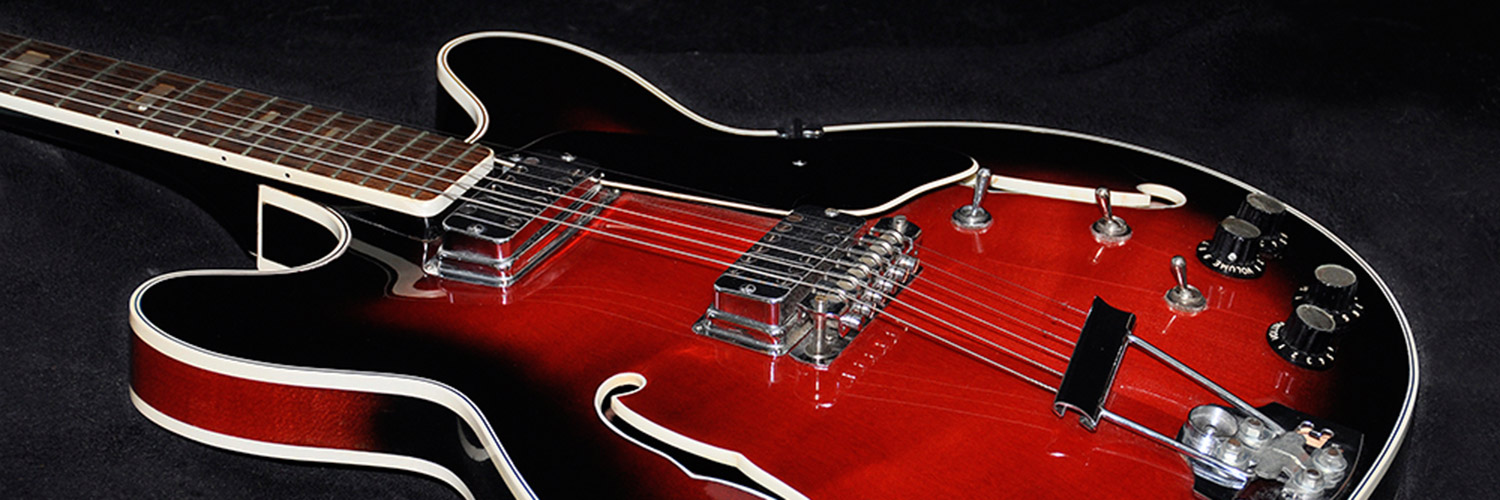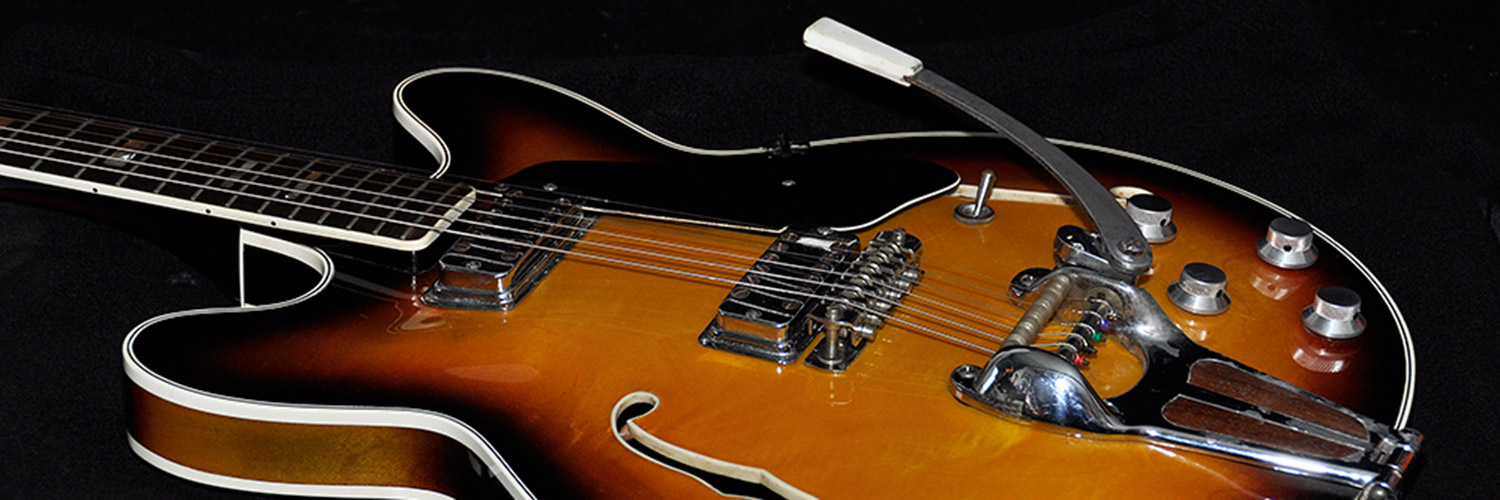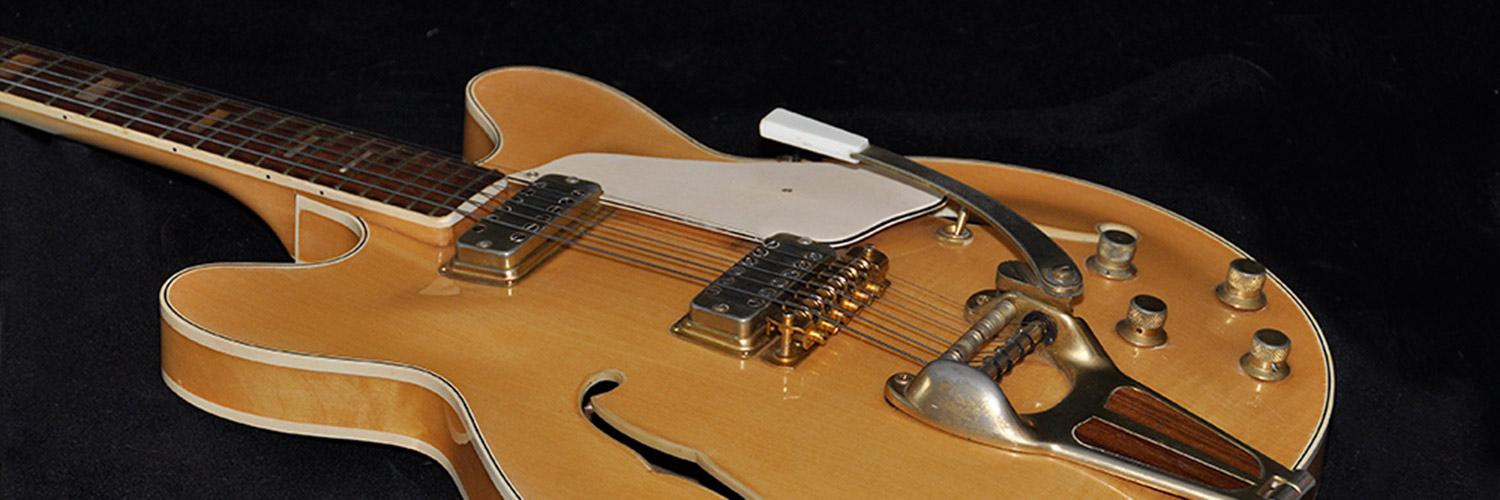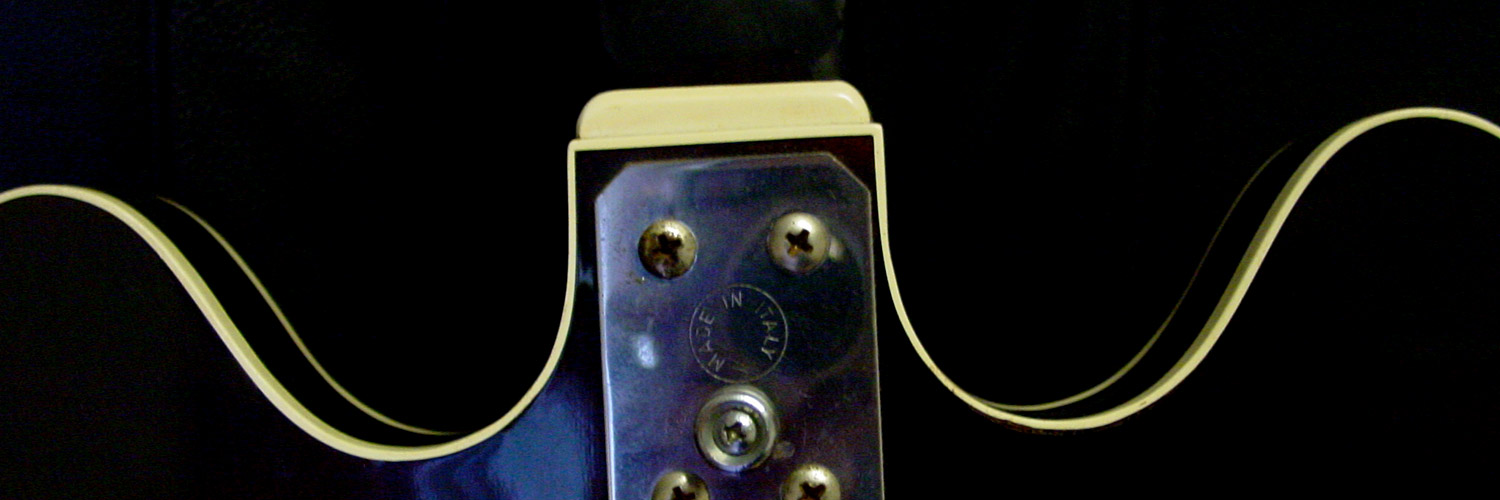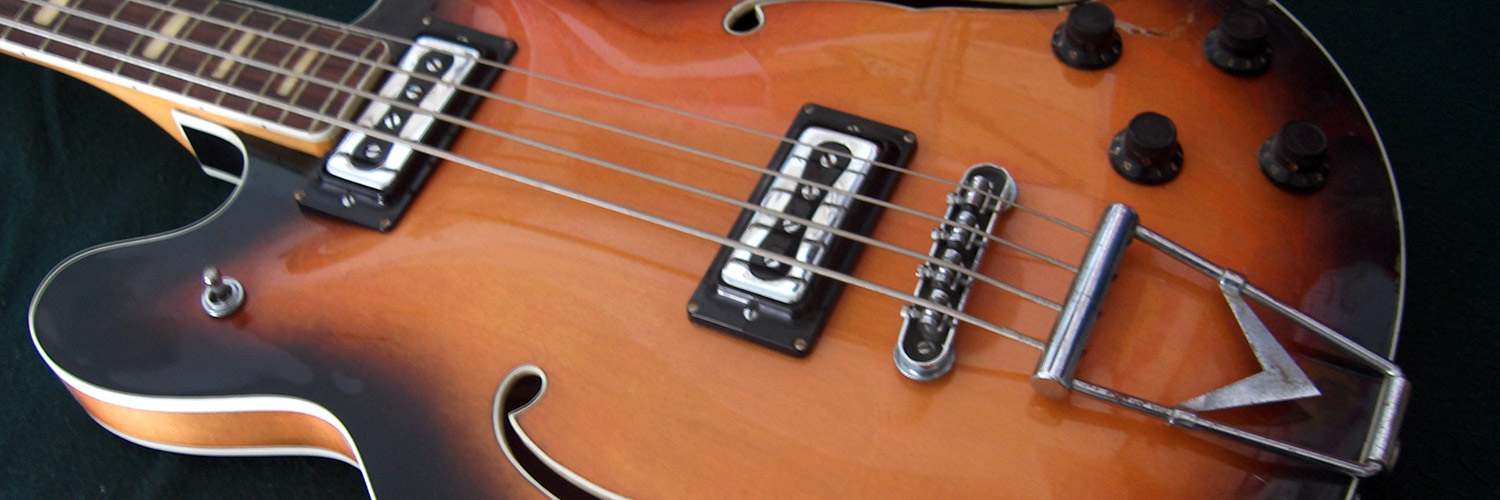Crucianelli in the ES-335 style
by Jack Marchal
The Beatles and the Mersey Beat boom of 1963-64 were a giant step ahead for the music — and a step backwards as far as gear is concerned. All of a sudden the high tech solidbody guitar fell out of fashion for being too strongly associated with early 60′s instrumental rock music (The Shadows and Spotnicks in Europe, Dick Dale and the surf music in the U.S.).
The British invasion bands favoured old dual cutaway semis made by Gretsch, Harmony, Epiphone, Rickenbacker, when not a real Gibson like Eric Clapton in his Cream era. Even bass players wanted to go semi-acoustic, which gave fully unexpected exposure to some European brands (McCartney and his Höfner, Bill Wyman and his Framus). For all makers issuing an ES-335 copy became an unescapable obligation. In 1964 the Stratocaster popularity was peaking; in 1967 production was almost discontinued. Meanwhile even Fender had to introduce a 335 copy of its own, the Coronado.
The most experienced in that field among European makers were supposed to be the German, but their guitars looked a bit too special to make convincing 335 copies. The Eko 285/Barracuda still was too definitely Eko -like. Japanese models were still flat out clumsy. Even the U.S. made Harmony and Kay suffered an amateur image. Crucianelli was one of the few european producers able to offer a sensible price-to-quality ratio along with the reasonably pro look that was in demand. Unlike Hagström’s world famous Viking range, Crucianelli’s ES-335-copies are scarcely visible, being scattered as usual over many brands. They were nevertheless produced by thousands, under the names Vox, Tonemaster, Baldwin (bodies only), España, FH, Élite and even (a dire rarity in the electric range)… Crucianelli!
The 335 hype wasn’t merely a matter of fashion, there were also some practical reasons behind it. For young people getting a noble piece of nearly traditional craftmanship as a Christmas present was far easier than extorting from Mum & Dad some equally expensive crazy sparkle plastic covered shape. A skilled musician who wanted to make a living in mainstream music or enter a jazz band would have been unwelcomed with his Wandré or Eko -700, an ES-335 styled guitar made it easier. Furthermore these guitars allowed home use without the back then so expensive amplifier. The semi-hollowbodies’ tendency to feedback wasn’t a problem due to the poor amp power available at that time. On the contrary, allowing a bit of feedback helped the specific resonance that typified lead guitar sound in mid-60′s pop music. Around 1969-70 the sudden availability of high power amplification paved the way to the LesPaul dictatorship, putting a brutal end to the semi-acoustic’s era of dominance — and to Crucianelli’s guitar operations as well.
Il boom dei Beatles e del Mersey Beat nel 1963-64 fu un passo da gigante per la musica — e un passo indietro per la strumentazione. Improvvisamente la chitarra solidbody high-tech divenne fuori moda, essendo fin troppo connotata con il rock strumentale dei primi anni 60 (gli Shadows e Spotnicks in Europa, Dick Dale e l’ondata della “surf music” in USA).
I nuovi gruppi britannici preferivano le vecchie semi-acustiche a due spalle mancanti di Gretsch, Harmony, Epiphone, Rickenbacker, o una vera Gibson come Eric Clapton al tempo dei Cream. Pure i bassisti volevano strumenti semi-acustici, il che diede una pubblicità insperata a certi produttori europei (McCartney e la sua Höfner, Bill Wyman e la sua Framus). Per tutti i produttori sfornare una copia di ES-335 fu una necessità alla quale non ci si poteva sottrarre. La Stratocaster aveva raggiunto nel 1964 il colmo della sua popolarità; nel 1967 non era quasi più fabbricata. Anche Fender fu costretta a far uscire una copia di 335 a modo suo, la Coronado.
In Europa, i fabbricanti più preparati nel campo erano in principio i tedeschi, ma le loro chitarre avevano un aspetto troppo particolare. La Eko 285/Barracuda era ancora troppo decisamente Eko. Francamente grossolani erano i modelli giapponesi. Anche le Harmony e Kay americane avevano un immagine piuttosto amatoriale. Crucianelli fu uno dei pochi costruttori europei capaci di proporre un rapporto qualità/prezzo e un aspetto professionale che soddisfaceva la domanda. Al contrario delle famosissime Viking di Hagström, queste Crucianelli sono state poco visibili, essendo disperse come al solito fra un gran numero di altri marchi. Però ne sono state prodotte parecchie migliaia, sotto i nomi Vox, Tonemaster, Baldwin (solo le casse), España, FH, Élite e (caso rarissimo nella gamma elettrica)… Crucianelli!
Il successo delle semi-acustiche non fu solo una questione di moda, si giustificava anche per ragioni pratiche. Per i giovani era più facile farsi regalare dai genitori per Natale un nobile pezzo di liuteria quasi tradizionale che una pazzesca creazione coperta di plastica e brillantini, ugualmente costosa. Per i chitarristi affermati era difficile riciclarsi nella musica “normale” o un complesso jazz con una Wandré o una Eko -700 — con uno strumento tipo ES-335 andava meglio. Poi queste chitarre consentivano l’uso casalingo senza l’allora costosissimo amplificatore. Comunque con i pochi watt allora disponibili la tendenza al feed-back delle semi-acustiche non era un gran problema; invece, sfruttando l’effetto, era possibile aiutare le chitarre ad ottenere la risonanza particolare tanto tipica nella musica pop nel mezzo degli anni 60. Fu la disponibilità dal 1969-1970 di amplificatori potentissimi che inaugurò la dittatura della Les Paul, ponendo una brutale fine all’era delle semi-acustiche — nonché del ramo chitarre di Crucianelli.

